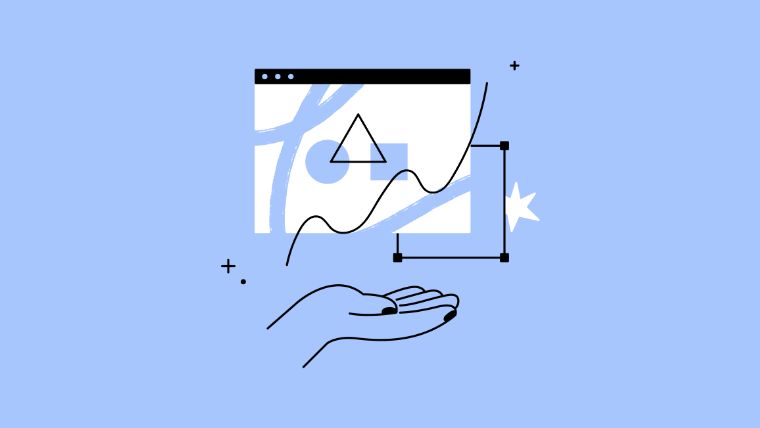A note from the editor: Last month, we talked about customer education as a growth driver. This month, Dr. Michelle Ellis dives into how we need to adapt our education programs to reflect an increasingly remote workforce and customer base.
With the continued focus on globalization, the advancement of technology, and the changing customer base and workforce, businesses are examining how their customer and employee education programs also need to evolve.1,2
Over the past three years, the pandemic has had a significant impact on the workplace environment. Prior to the pandemic, approximately 6% of US-based employees worked remotely.3 Experts predict that 36 million Americans will work remotely in 2025, an 87% increase from pre-pandemic levels.4,5
How Virtual Learning Must Adapt to Meet the Changing Work Environment
What does this mean for your customer and employee education and enablement efforts? As the workplace environment becomes more hybrid and remote-based, learning professionals need to consider different approaches to educating customers and employees. Learning for these audiences can't be solely focused on instructor-led training (ILT) or virtual instructor-led training (VILT). The changing landscape of work requires that we tailor learning to help individuals when they need it, while also keeping them motivated and engaged.
One example of this is changing our mindset of what on-the-job training looks like to be more aligned with the concepts of learning in the flow of work.6 Learning in the flow of work makes learning a part of everyday work by providing learning in the context of the workplace, at the moment of need, as compared to more formal and traditional types of learning (e.g., curriculum). This is why we need to consider other modalities of just-in-time learning, such as eLearning, bite-sized learning, self-directed learning, social learning, and gamified learning experiences.
As learning professionals, many of the tactics we consider remain the same—such as having clear goals and outcomes for your targeted audience and aligning the content with these in order to measure the value learning provides. The biggest shift will be emphasizing how and when learning occurs in the remote work environment. This is where the type of learning platform, design and development tools used, and the learner experiences you incorporate into your employee and customer training will have the biggest impact on your business’ growth.
68% of customers report using products more after training, while 56% use more product features than they would if untrained. The same study found that 87% of customers say they can work more independently when trained.7

An average formalized customer education program drives a 6.2% increase in organizational bottom-line revenue, a 7.4% increase in customer retention, and a 6.1% decrease in support costs based on Forrester’s risk-adjusted estimates. Intellum (2019)8

7 Considerations for Developing Virtual Customer and Employee Education
The following are some considerations for developing customer and employee education and enablement programs for learning in the virtual space:
1. Set Expectations
Set expectations for the program early and often with an orientation that outlines the learner’s journey and fosters ownership of their learning.9
2. Engage Across the Customer Journey
Identify opportunities to engage with the learner at key milestones during their journey to motivate and encourage engagement.
3. Incorporate Different Facilitation Methods
Enhance virtual facilitation methods to keep learners engaged.10,11 This might look like using a training team, rather than just one facilitator, or encouraging participant involvement through questions and games.
4. Adopt a Variety of Instructional Approaches
Create dynamic, inclusive learning experiences that leverage multimodal learning to facilitate comprehensive learning outcomes. Leverage training approaches that incorporate engaging learning experiences, such as:
- Social Learning: Collaborative, Coaching, Peer-to-Peer
- Learning in the Flow of Work: Job Shadowing, Video, and Microlearning
- Experiential Learning: Simulations, Case Studies, Gamification12
5. Let the Learner Set the Pace
Create self-directed/self-paced learning experiences where the learning feels personalized and the learner is in control of their experience.
6. Produce Bite-Size Content
Consider chunking content and complex information into shorter, more digestible, and engaging formats,13 enabling the learner to absorb information and apply it more effectively
7. Scale Learning With the Right Technology
Maximize the scalability of the learning experience to meet the needs of various audiences by leveraging a flexible and intuitive learning platform that encourages engagement with the content quickly and efficiently.
Put it into action:
Map out the learner journey to identify where you can leverage various modalities to create an engaging and motivating virtual learning experience that supports their learning in the moment of need and in the flow of work.
Referenced articles for continued learning:
(1) Cornwell,S., Edtech Digest.(2023). Conquering the Challenges of Traditional Customer Education.
(2) Zetlitz, M. and Heivoll, A., eLearning Industry.(2023). 7 Key Corporate Learning Trends in 2023.
(3) United Census Bureau.(2022). The Number of People Primarily Working From Home Tripled Between 2019 and 2021.
(4) International Association of Workforce Professionals.(2020). Study finds 22% of American Workforce will Be Remote by 2025.
(5) Upwork.(2021). Future Workforce Report 2021: How Remote Work is Changing Business Forever.
(6) Bersin, J.(2018). A New Paradigm for Corporate Training: Learning in the Flow of Work.
(7) Manning-Chapman, M., TSIA.(2017). 3 Ways Education Services Can Advance the Customer Journey.
(8) Forrester Consulting and Intellum.(2019). Increase Revenue and Improve Customer Retention Through Customer Education Programs.
(9) Gupta, D., Whatfix.(2022). 10 Best Practices for Training Your Remote Employees.
(10) Packham, L., DDIWorld.(2020). Everything You Need to Know About Virtual Facilitation.
(11) Colavita, F., ATD.(2021) Best Practices for Virtual Facilitation: 3 Key Roles for Effective Online Training Delivery.
(12) Gain, J.(2022). Gamification of Learning Management Systems for Improved Student Engagement and Learning Outcomes.
(13) Koh,N., Gottipati,S., Shankararaman,V.(2018). Effectiveness of Bite-Sized Lecture on Student Learning Outcomes.



.png)

